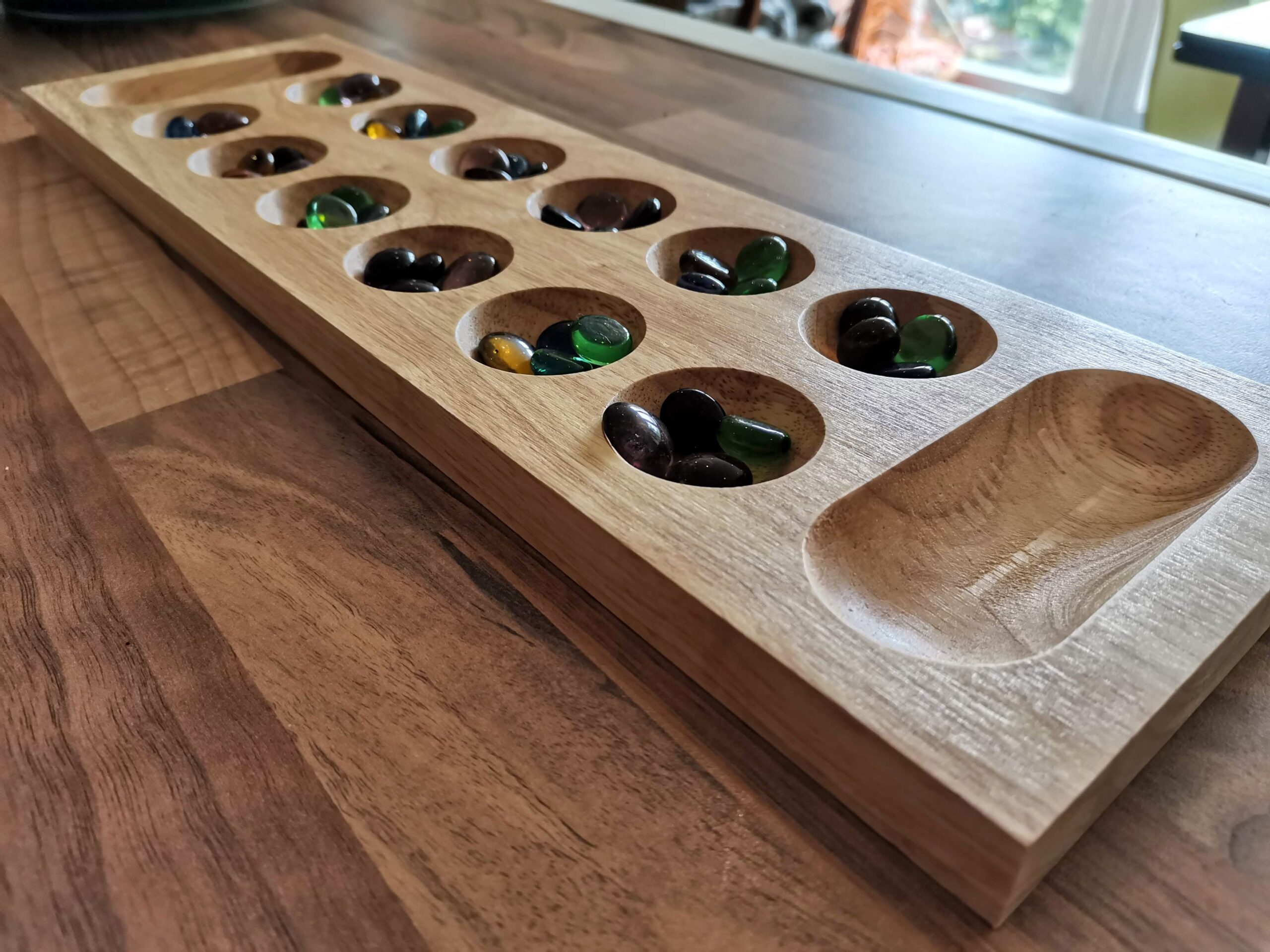Shake That City Review
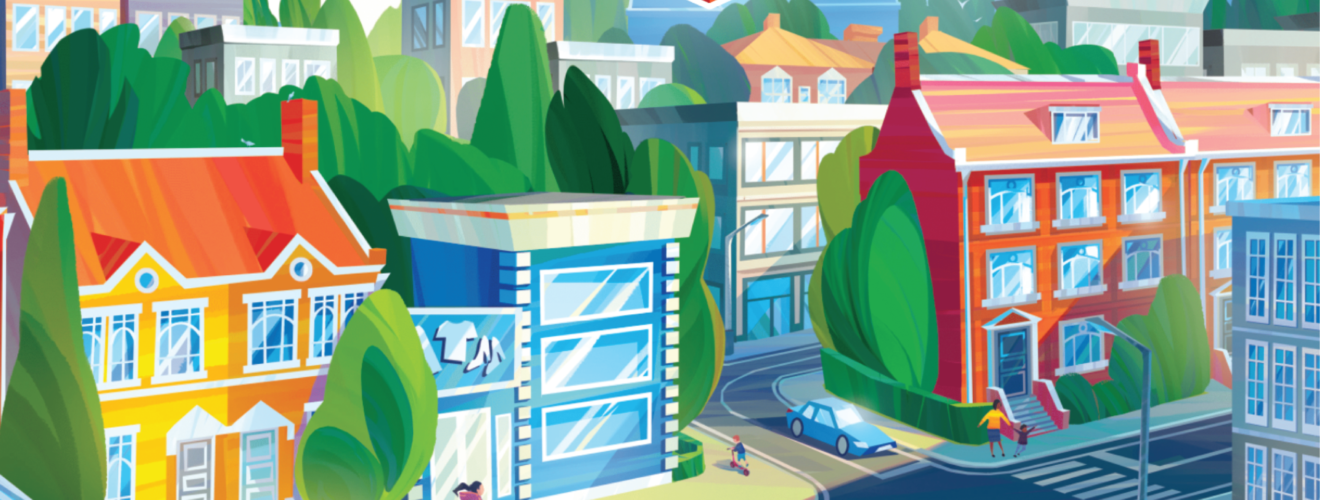
🎵 Shake, shake, shake senora, shake your box of cubes,
Shake, shake, shake senora, also shake your boo… irrational dislike of gimmick games.🎵
If you’re going to Jump In The Line down at your local game store, you might spot Shake That City soon, a quick, puzzly game from designers Mads Fløe and Kåre Torndahl Kjær, and publisher AEG. If you’ve seen the cool kids showing Shake That City on Youtube or that there Tiktok, you’ll have seen the cube shaker in action. It’s a cardboard contraption, lashed together with elastic bands, which powers the game’s beating heart.
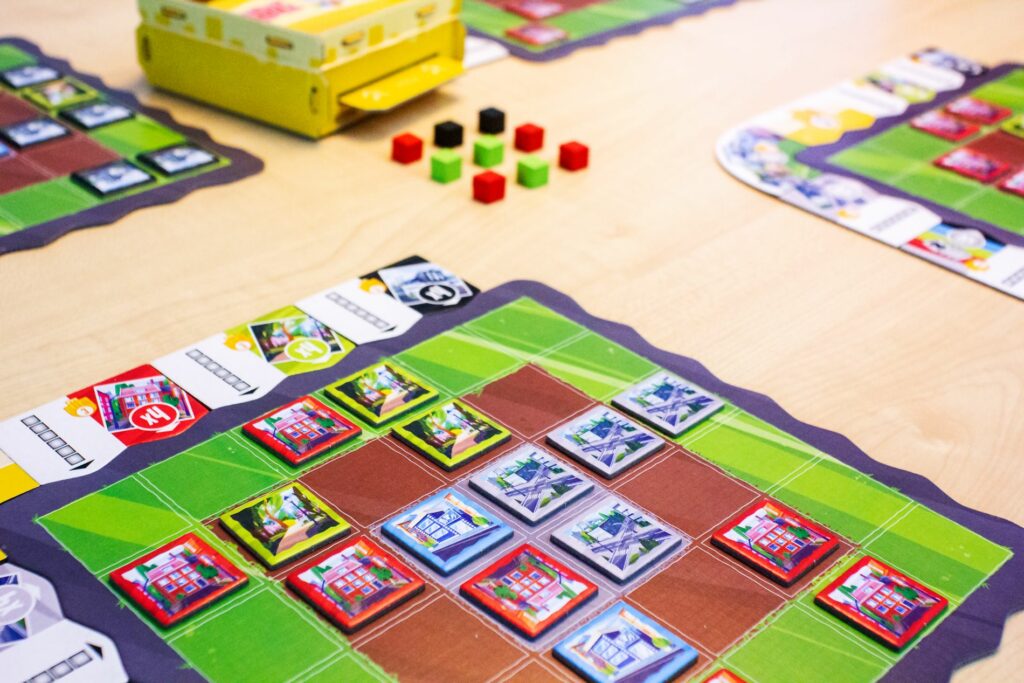
Yes, it’s a gimmick. No, it’s not entirely necessary. It’s a lot of fun though, and it turns out to be much more important than it first seems.
Town planning
Shake That City is a tile-laying puzzle game with really light rules. The (very tenuous) theme has you choosing a series of tiles to make your own little city on your 5×5 grid boards. “But Adam, how am I – a lowly civil engineer – meant to choose which buildings and infrastructure go into my city?”. Don’t worry, friend, that’s where the cube shaker comes in.
The cube shaker has an open slot on top of it where you can dump in all of the cubes. Then you give it a shake, hence the name of the game! There’s a clever series of holes in the layers in the box, and when you push the tab in on the front, a neat little 3×3 square of cubes drops out of the bottom of the box, onto the table. I’m not entirely sure how it works. I think it’s some kind of Scandinavian wizardry.
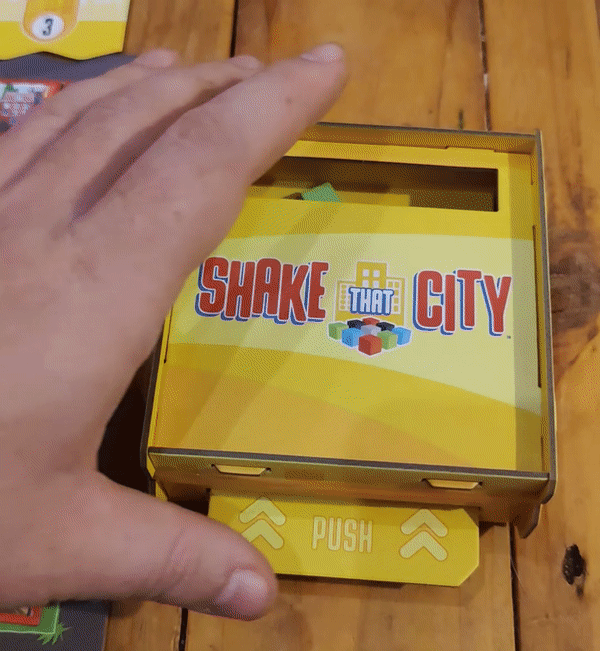
The cubes are the same colours as the various tiles in the game, and it’s up to you to choose one of the colours on display, take some matching tiles, and place them on your board. There’s a catch though – such is life. The tiles you place have to match the colour, the quantity, and the exact layout of the cubes on the table. There’s no mirroring, flipping, or rotating in this game. What you see is what you place. In the early game, it’s not a problem, but as the game progresses, sometimes the patterns on offer just won’t fit on your board, and things start to get tricky.
A rose by any other name
When you strip away all of Shake That City’s finery, it’s a game about making patterns of tiles that score well in combination. Think of games like Tigris & Euphrates, or Almadi (review here). Roads need to connect to the edge of the board to score, shops score best near the middle of the board, but need to connect to the edge by roads. Homes like to be on their own, but not next to factories, while factories like to be next to other factories and roads.

Shake That City could easily have been a roll-and-write, and it would have been great. There are a load of different ways to decide which buildings you’re adding: cards, dice, blind-draw cubes from a bag etc. The same goes for marking them on your board. The board could just as easily have been a pad of sheets to scribble on, or pages you print at home.
Ordinarily, these things might make me think that adding the whole cube shaker thing is a gimmick. Pointless over-engineering of a problem that doesn’t need solving. This time though, I’m inclined to be more lenient. I think the shaker box is a good thing, and for two big reasons.
My cube shake brings all the boys to the yard
I admit it: I really enjoy using the shaker. I like the noise it makes when the cubes bounce around inside, I like pushing the tab in, and I love the moment of anticipation as you pick the box up only to see OH MY GOD, IT’S DONE IT AGAIN, IT WORKS! It should get old after the first ten or fifteen times, but it doesn’t. The cardboard magic is always special. Admittedly, sometimes it drops two cubes instead of one in a space, or none at all, but 60% of the time, it works every time.

Secondly, it adds a toy factor to the game. That toy factor is massively important in getting non-gamers engaged, and that’s always a good thing as far as I’m concerned. I’m not one of those people who think games are for the Alpha Nerd gamers and nobody else. I want everyone to play games, and enjoy them. I’ve had first-hand experience of people walking past the game and having their attention grabbed by the sound of wooden cubes, rattling against the box’s cardboard innards. Those same people have gone on to really enjoy the game.
That might sound inconsequential, but it really isn’t. A big part of my personal mission in running this site, and writing these reviews is inclusion and making people realise this is a hobby for everyone.
Final thoughts
Shake That City probably should have a flip- or roll-and-write game. It would have worked well and I’d have really enjoyed it. As it happens, however, it’s a fully-fledged board game, and it’s a good one. The puzzle of trying to make the random patterns work together is really clever and reminds me of the end-game scoring of Almadi a lot.
There’s a clever touch which places bonus tiles in a random order around your board, offering big bonuses if you manage to complete the conditions in the relevant rows and columns. The random nature of these tiles and the cube-plopping machine mean each game genuinely feels different. If you do start to find the tasks a little boring, the player boards flip over to reveal a beachside space instead, with its own rules for scoring.
Shake That City is going to do really well with people who like this style of quick-and-easy games. It would make a great addition to the collection of someone who enjoys games like Cartogtaphers. The obvious comparison that I think some people would want to make is with Tiny Towns (review here), but while they share the idea of cubes and square grids to make towns, they feel very different. Shake That CIty is much more forgiving of a puzzle.
The Kickstarter campaign for Shake That City goes live on November 29th 2022, and apparently, the main pledge is only $29! Depending on the shipping and taxes in your part of the world, it sounds like an absolute bargain to me, and I readily recommend it to families and fans of lighter games, looking for something new.
Review copy kindly provided by Alderac Entertainment Group. Thoughts and opinions are my own.
If you enjoyed this review and would like to read more like this, consider supporting the site by joining my monthly membership at Kofi. It starts from £1 per month, offers member benefits, and lets me know you’re enjoying what I’m doing.
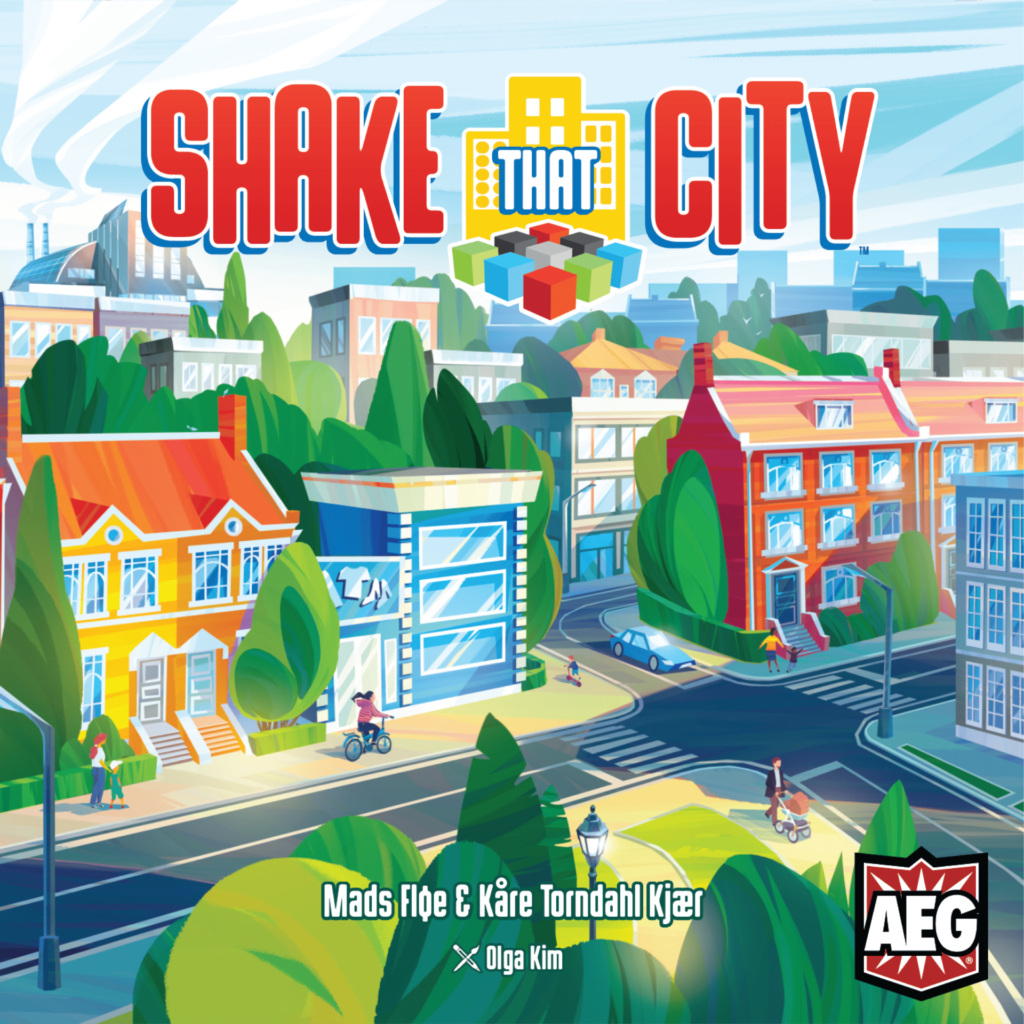
Shake That City (2023)
Designers: Mads Fløe, Kåre Torndahl Kjær
Publisher: Alderac Entertainment Group
Art: Olga Kim
Players: 1-4
Playing time: 45 mins







